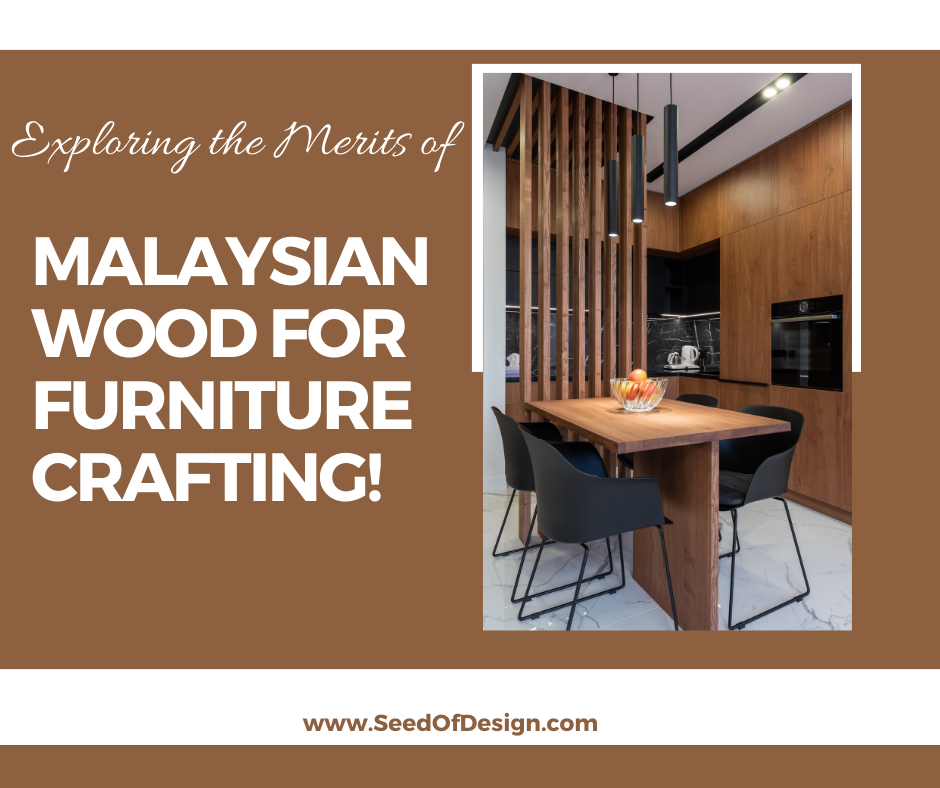
Are you tired of investing in furniture made of different wood types, only to be disappointed by their quality and durability? Have you considered Malaysian wood as a potential solution but find yourself uncertain about its merits? If these questions resonate with you, this article aims to shed light on the advantages and drawbacks of using Malaysian wood for furniture, helping you make an informed decision about this intriguing wood type.
Understanding Malaysian Wood: A Tropical Treasure
Malaysian wood encompasses a variety of wood species grown and harvested in Malaysia, a Southeast Asian country celebrated for its lush tropical forests. Among the commonly used Malaysian wood species are rubberwood, meranti, teak, and acacia. These woods are distinguished by their remarkable strength, durability, and visually appealing grains, making them ideal for furniture crafting, construction, and woodcraft.
The primary sectors that benefit from Malaysian wood are the furniture and construction industries, where it finds applications in crafting cabinets, flooring, doors, window frames, and decorative woodcrafts. Malaysian wood has earned a positive reputation in the furniture market due to its exceptional quality, durability, and affordability. It stands as a reliable and sustainable alternative to pricier hardwoods like oak and mahogany. The competitive pricing of Malaysian wood makes it a preferred choice for budget-conscious consumers who seek high-quality furniture without breaking the bank.
Advantages of Using Malaysian Wood for Furniture
Premium Quality: Malaysian wood is renowned for its high quality and durability, making it a preferred choice for high-end furniture manufacturing. Its resistance to rot, decay, and insect infestation ensures the longevity of furniture crafted from this wood, making it an excellent option for long-lasting pieces.
Versatility: Malaysian wood offers versatility in furniture crafting. It can be shaped and cut easily, allowing for diverse furniture designs, including chairs, tables, cabinets, and beds. Its adaptability makes it an excellent choice for custom furniture projects.
Aesthetically Pleasing: Malaysian wood is appreciated for its distinctive grain patterns, colors, and textures that enhance the visual appeal of furniture pieces. Its customizability allows for various finishes, stains, and paints, enabling furniture to complement any desired decor style.
Sustainability: Malaysia has strict regulations in place to ensure responsible forestry practices, making Malaysian wood a sustainable option. Furniture manufacturers can confidently source wood from Malaysia, contributing to the sustainability of the industry.
Affordability: Malaysian wood is cost-effective, enabling furniture manufacturers to obtain high-quality wood at reasonable prices. This affordability benefits consumers, allowing them to access high-quality, yet affordable, furniture options.
Disadvantages of Using Malaysian Wood for Furniture
Environmental Concerns: Despite being a sustainable option, there are concerns about deforestation and habitat destruction due to the demand for Malaysian wood. Illegal logging and poor forestry management practices can lead to environmental degradation.
Limited Availability: Some types of Malaysian wood are becoming scarce due to overuse and inadequate forest management. Limited availability can result in challenges for furniture manufacturers to obtain high-quality Malaysian wood at reasonable prices.
Susceptibility to Cracking: Malaysian wood is prone to cracking, particularly when exposed to changes in temperature and humidity. Furniture made from this wood may require more maintenance to prevent cracking and warping.
Heavy Weight: Malaysian wood is dense and heavy, making it challenging to move and transport furniture crafted from this wood. This weight can pose difficulties for shipping and relocating furniture.
Cost: While Malaysian wood is generally affordable, some high-quality varieties can be expensive, impacting the overall cost of furniture made from these woods.
Choosing the Right Malaysian Wood
Several types of Malaysian wood are popular for furniture crafting, each with its unique characteristics. Merbau, Teak, Rubberwood, and Nyatoh are among the well-known options. Merbau is durable and often used for outdoor furniture, while Teak boasts resistance to rot and decay, making it ideal for various furniture pieces. Rubberwood is a sustainable choice, and Nyatoh is a lighter hardwood used for indoor furniture.
Comparing Malaysian Wood with Mahogany and Gmelina
Malaysian wood, mahogany, and Gmelina are all favored materials for furniture crafting, each with distinct advantages. Malaysian wood is celebrated for its durability, sustainability, and unique grain patterns. It is commonly used in outdoor furniture, decking, and boat building due to its water-resistant properties. Mahogany, on the other hand, is renowned for its reddish-brown hue and luxurious appearance, making it a staple in traditional furniture making. Gmelina is a lighter wood with uniform texture, valued for its ease of workability, strength, and resistance to decay.
In summary, Malaysian wood offers a wealth of advantages, including premium quality, versatility, aesthetic appeal, sustainability, and affordability. While it has some disadvantages, careful consideration of specific wood types and their intended applications can help mitigate these challenges. Whether compared to mahogany or Gmelina, Malaysian wood holds its own as a valuable and versatile choice for furniture crafting. By understanding its merits and drawbacks, you can make an informed decision about incorporating this tropical treasure into your furniture projects.



